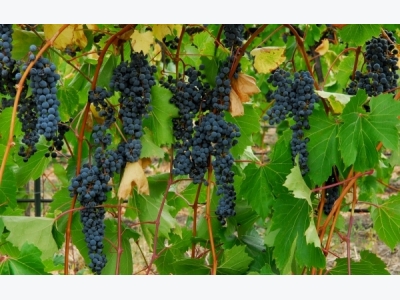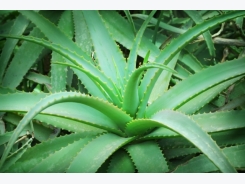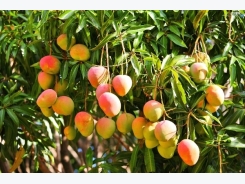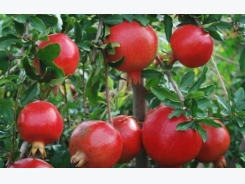Grape Cultivation Information Guide

Introduction of Grape Cultivation:- Grape is one of very popular crops in the world. This crop is grown commercially in most of the countries. Grapes usually grow on the perennial and deciduous woody climbing vine. Grapes can be eaten as fresh (raw) fruits or used for making juice, jelly, jam, vinegar, wine, raisins, grape seed oil and grape seed extracts. Grapes are good source of minerals like calcium, phosphorous, iron and vitamins like B and grapes have an excellent health benefits. Grapes belong to the family of “Vitaceae” and originated in Western Asia and Europe. Grapes occupy 16% of world fruit production. Commercial cultivation of grapes mainly intended for table purpose, export purpose, making wine and making raisins. With proper care and vine management, one can expect decent profits from commercial cultivation of grapes by supplying to local markets and exporting to international markets. Organic grape farming is the best bet, if you are planning for commercial cultivation. The major grape growing countries are Italy, France, Spain, USA, Turkey, Argentina, Iran, Portugal, South Africa and Chile. China occupies number one position in grape production in Asia.

Grape Cultivation
Health Benefits of Grapes:- The following are some of the health benefits of grapes.

Health benefits of Grapes
- Grapes help relieving migraine.
- Grapes are helpful in treating Alzheimer’s disease.
- Grapes prevent indigestion.
- Grapes fight breast cancer.
- Grapes prevent eye degeneration.
- Grapes are good for diabetic patients.
- Grapes help lowering blood cholesterol.
- Grapes help healing kidney problems.
- Grapes relieve asthma.
- Grapes prevent clots in blood and good for heart health.
- Grapes are good for bone health.
- Grapes boost immune power and help fight viral infections.
- Grapes relieve constipation.
- Grapes help preventing some type of cancers.
- Grapes are good for skin and hair health.
Grape Varieties:- The main categories are divided into grapes with seed and without seed. Table grapes, Raisin Grapes and Wine Grapes fall under these categories. When it comes to commercial varieties, there are many improved varieties specific to the region. Grapes are usually available in three colours; Green, Red and Black. Selecting a high yielding and disease free cultivar play most important role in profitable commercial farming of grapes. Local horticulture department (or) Agriculture University is the best source to find out the suitable cultivar for your area.

Different Colours of Grapes
Local Names of Gapes in Other Parts of the World:- Traube (German), Usan üzem (Mongolian), fìondhearc (Scottish),Canab (Somali), Viinamari (Estonian), Grožđe (Bosnian), Hardhi (Albanian),fíonchaor (Irish), σταφύλι (Greek), Podo (Korean), अङू्गर /Angur (Nepali), Uva (Portuguese, Spanish), Enab (Arabic), Грозде (Bulgarian), 葡萄 / Pútáo (Chinese), Ubas (Filipino), Uva / Vite euroasiatica (Italian), pú tao (Mandarin), Drue (Norwegian), องนุ่ / Xngùn (Thai), nho (Vietnamese), za-byi’-thí (Burmese), ぶどう / Budo (Japanese), Hrozna (Czezh), Raisin (French), GrozJe (Macedonian), Виноград (Russian), Druva (Swedish), igilebhisi (Zulu), Uzüm (Turkish), Vindrue (Danish), Szőlő (Hungarian), anggur (Malay), angūr (Persian), Phutoo (Taiwanese), Виноград (Ukrainian).
Local Names of Gapes in India:- Angoor (Hindi, Bengali, Panjabi, Oriya, Assamese, Urdu), Thdrachai (Tamil), Dhraksh (Gujarati), Draksh (Marathi), Dhrakshi (Kannada), Mundiranga (Malayalam), Da’ch (Kashmiri),
Climate Required for Grape Cultivation:- Grapes are grown under both sub-tropical and tropical conditions. However, grape crop prefers hot and dry weather conditions. Temperature, relative humidity, frost conditions and rainfall are the major factors that influence the yield in grape cultivation. Coastal areas are not suitable for grape cultivation as high rainfall and humidity is not suitable. Grape crop tolerates frost during resting stage but is very susceptible during growing period. The optimal temperature for grape cultivation is 15°C to 40°C and climate should be clear for 3 months during the cropping period. Cloudy weather, high humidity, low temperature and rain during flowering and berry development impact the crop growth and yield. Grapes grow well in the regions where annual rainfall does not exceed 900 mm

Red Table Grapes
Soil Requirement for Grape Cultivation:- Grapes can be grown in wide range of soils. However, Sandy to clayey and loamy soils with good drainage and organic matter are ideal for grape cultivation. Soils having pH value of 6.5 to 7.5 are best for its growth and good yield. Salinity in the soil is the major hindrance that impacts the growth and yield of the crop.
Season for Grape Cultivation:- Grapes can be grown throughout the year where irrigation facility and low-frost conditions, good temperatures are available.
Land Preparation in Grape Cultivation:- Land should be prepared by giving 3 or 4 deep ploughings by a tractor followed by harrowing it thrice. Make sure all the previous crop weeds are removed. If you are planning for drip irrigation, it is not required to have perfect levelling of land. Generally, the size of the plot will depend on the type of training system used. In case of bower and telephone or “T” trellis the best size could be 60 meter X 80 meter and 90 meter X 120 meter respectively. Any micro nutrient gap should be filled based on the results of soil test. Supplement the soil with appropriate garden compost or welldecomposed farmyard manure (FMY). Soil should have proper drainage to drain-out any excess water.
Propagation in Grape Cultivation:- The most common way of propagation in grape cultivation is thorough hard-wood cuttings. However, it can be propagated by seed, layering, budding and grafting and budding methods. In some situations, the rootstock are planted in the main field and they are grafted with suitable cultivars.
Spacing and Planting in Grape Cultivation:- Basically, spacing varies with the cultivar (variety) and soil fertility. Under organic farming conditions, a spacing of 2.5 meter x 1.5 meter , 2.75 meter x 1.50 meter and 3.0 meter x 1.5 meter should be followed. For this model scheme, a spacing of 2.75 meter x 1.50 meter with a plant population of 2450 plants/ha should be considered. Pits of 90 x 90 x 90 cm in size should be dug and filled with soil and well-decomposed farmyard manure (FMY). Usually a FMY of 50 to 60 tonnes/ha is sufficient in grape cultivation. In-order to settle the soil in pits, carry out a light irrigation. Generally, a rectangular system of planting is adopted in grape farming.
Irrigation in Grape Cultivation:- Regular irrigation should be practiced in grape cultivation. In case of drip irrigation is followed, 45 to 50 liters of water in summer;35 to 40 liters of water in winter and 20 to 25 liters of water in rainy season per vine should be applied. In case of flood irrigation is followed, 5-6 days interval during summer; 9-10 days interval during winter; and 18-20 days interval during rainy season should be maintained. In case of heavy rains, make sure to drain out the water as soon as possible.
Manures and Fertilizers in Grape Cultivation:- Well-decomposed farmyard manure (FMY) should be applied at the rate of 50-60 tonnes/ha during land preparation. Balanced nutrition and use of chemical, organic and biofertilisers is essential to get a good yield every year. About 750 to 900 N, 450 to 600 P and 800 to 1000 K Kg/ ha/year should be applied. Biofertilizers like Azatobacter, Phosphate Solubilizing Bacteria(PSB), Effective Microorganism (EM), Neem cake and vermiwash should be used to supplement the nutrient requirement of grape garden.Trichoderma, Azatobacter and PSB are applied @ 25 grams/vine Neem cake should be applied @ 1.25 tonnes/ha. To improve the quality of fruits, a solution of sugar, humic acid and coconut water should be sprayed at bud development stage.
Intercultural Operations in Grape Cultivation:- Gap filling should be done preferably during one month after planting. For Uniform new growth, basal cut keeping 2/3 buds should be taken 1 month after planting. The weeding should be done twice or thrice depending on the intensity of weeds. The bamboo sticks should be used for vine support and young growing points should be trained on them. Frequent irrigation along with appropriate fertilizers should be applied as part of the intercultural operation of grape garden.
Pruning and Training in Grape Cultivation:- The grape vines should be trained on a suitable trellis like ‘T’, ‘Y’, ‘H’ or bower and regularly pruned 2 times a year. First annual pruning should be done during the month of April to get the new vegetative growth while second pruning to get the crop should be done during the month of October. While doing April pruning 0 to 2 buds on arm should be kept while doing October pruning 5 to 10 buds on fruiting cane should be kept. The grape vines should be trained first on bamboo support and then on support – trellis. A suitable method of training is adopted. Initial pruning should be done only for training i.e. for developing trunk, arm, fruiting, and canes. Plant hormones can be applied during different stages of growth to increase the fruit set and yield.
Diseases and Insects in Grape Cultivation:- Many pests and diseases attack the grape vines during many stages. Proper plant protection measures should be carried out to control these. Grape vines are attacked by many pests and diseases. The common pests in grape farming are thrips, flea beetles, leaf hoppers and mealy bugs. The common diseases in grape farming are powdery mildew, anthracnose and downy mildew.
- Downy mildew/ Powdery mildew : To control this disease, spray Trichoderma, 1% Bordeaux mixture + Dasparni arka + Cow urine
- Mealy bugs: To control this pest, spray cow dung urine.
- Anthracnose : Spraying of Solution of acacia leaves will check this disease.
- Thrips: Spraying of Dasparni arka will control these kinds of pests.
Preparation of Dasparni arka: This can be prepared by adding 25 kg leaves of Neem and 2 kg leaves each of Nirgudi, Kaner, Cotton, Custard apple, Papaya, Castor, Karanj, Gudwel, Drumstick in 200 liters of water. In the solution, 5 to 10 liters of cow urine and 2 kg of green chillies should be added. The solution should be kept for 15-21 days for fermentation. The stock solution is prepared by filtration through muslin cloth. The spraying should be done by adding 5 liters of stock solution in 200 liters of water.
Note: Contact your local horticulture / agriculture department / agriculture university research center for pests and disease symptoms and their control. They are the best source for pest and disease solutions in grape cultivation.
Harvest in Grape Cultivation:- Harvesting season varies from area to area and variety to variety. Grape is harvested almost all the year round. If not all the varieties, one or the other variety is always available at any given time of the year. Well matured bunches having at least 18° brix should be harvested
Post Harvest in Grape Cultivation:- An about 3 to 4 kg corrugated boxes should be used for packing the grapes. If you are planning to transport long distances, grape guards, pouches should be kept inside the boxes. Pre-cooling and use of grape guards should be used for cold storage and export/international markets.
Yield in Grape Cultivation:- Grape yield depends on the cultivar and soil type and vine management practices. On an average, 25-30 tonnes/ha/year can be obtained for seedless varieties where as is seeded varieties, 45-50 tonnes/ha/year can be obtained. The economic life of grape vine is about 14 to 15 years and harvesting of fruits can be carried out up to an age of 14 to 15 years.
Marketing of Grapes:- As a fresh produce, one can transport to local markets and in other forms like puree and frozen can be exported to international markets.
Có thể bạn quan tâm
Phần mềm

Phối trộn thức ăn chăn nuôi

Pha dung dịch thủy canh

Định mức cho tôm ăn

Phối trộn phân bón NPK

Xác định tỷ lệ tôm sống

Chuyển đổi đơn vị phân bón

Xác định công suất sục khí

Chuyển đổi đơn vị tôm

Tính diện tích nhà kính

Tính thể tích ao hồ




 Orange Cultivation Information Guide
Orange Cultivation Information Guide  Pomegranate Cultivation Information Guide
Pomegranate Cultivation Information Guide